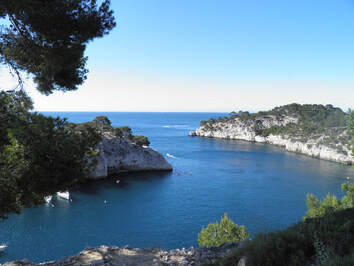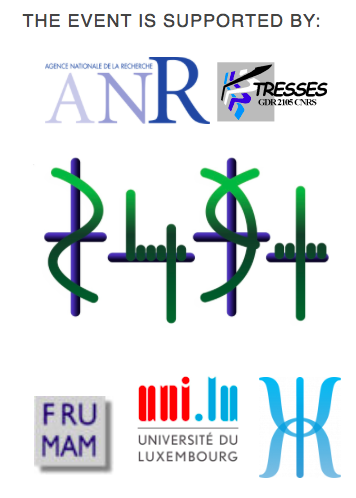|
Homological and quantum invariants
Invariants Homologiques et Quantiques 8 – 12 February 2021 Organizing Committee
Comité d’organisation Léo Bénard (University of Göttingen) |
|
The aim of this workshop is to continue the study of low-dimensional topology invariants built in parallel from quantum groups or homologies of configuration spaces, and to observe their relations. Recent results [J-K, Ko, Ma] indeed relate the Verma modules of Uq(𝖘𝖑2) very precisely to configuration space homologies on punctured disks.
On the one hand, recipes for constructing quantum invariants are known but their topological content is often lost, giving rise to numerous conjectures (volume conjecture [MuMu], conjecture [AMU] etc.). On the other hand, the methods for constructing invariants from configuration spaces are less developed while the homological information remains apparent. The rich algebraic structures coming from both homological tools (Poincaré duality, cup and cap product, etc.) and representation theory (tensor product, decomposition into weight spaces, etc.) should shed light on each other. Also, the generalization of this homological approach to invariants coming from other quantum groups is still little known. Finally, it is reasonable to think that this interpretation in terms of configuration spaces will bring new point of views on quantum knot polynomials [An, Big, It] and their categorifications [AbSm, DrWa, Ma06]. |
Le but de ce workshop est de continuer l’étude des invariants de topologie de basse dimension construits parallèlement à partir de groupes quantiques ou d’homologie d’espaces de configurations, et d’observer leurs liens. Des résultats récents [J-K, Ko, Ma] relient en effet les modules de Verma de Uq(sl2) de manière très précise à des homologies d’espace de configuration sur les disques à pointes.
D’un côté, les recettes pour construire les invariants quantiques sont connues mais leur contenu topologique est souvent perdu, donnant lieu à de nombreuses conjectures (Conjecture du volume [Mu-Mu], conjecture [AMU] etc.). De l’autre, les méthodes pour construire des invariants à partir d’espaces de configurations sont moins dévelopées tandis que l’information homologique reste apparente. Les très riches structures algébriques provenant à la fois des outils homologique (dualité de Poincaré, cup and cap product, etc.) et de la théorie des représentations (produit tensoriel, décomposition en espaces de poids, etc.) devraient pouvoir s’éclairer les unes les autres. Aussi, la généralisation de cette approche homologique aux invariants provenant d’autres groupes quantiques est encore peu connue. Enfin, il est raisonnable de penser que cette interprétation en termes d’espaces de configuration apportera de la lumière sur les polynômes quantiques de noeuds et leurs catégorifications. |
- [AMU] J.E. Andersen, G. Masbaum, and K. Ueno, Topological Quantum Field Theory and the Nielsen-Thurston classification of M(0,4), Mathematical Proceedings of the Cambridge Philosophical Society 141 (2006).
- [J-K] C. Jackson and T. Kerler, The Lawrence–Krammer–Bigelow representations of the braid groups via quantum sl2, Advances in Mathematics, 228, (2011).
- [Ko] T. Kohno, Quantum and homological representations of braid groups, Configuration Spaces – Geometry, Combinatorics and Topology, Edizioni della Normale (2012).
- [Ma] J. Martel, A homological model for Uq(𝖘𝖑2) Verma-modules and their braid representations, arXiv:2002.08785.
- [Mu-Mu] H. Murakami, J. Murakami, The colored Jones polynomials and the simplicial volume of a knot, Acta Mathematica, 186, (2001)



